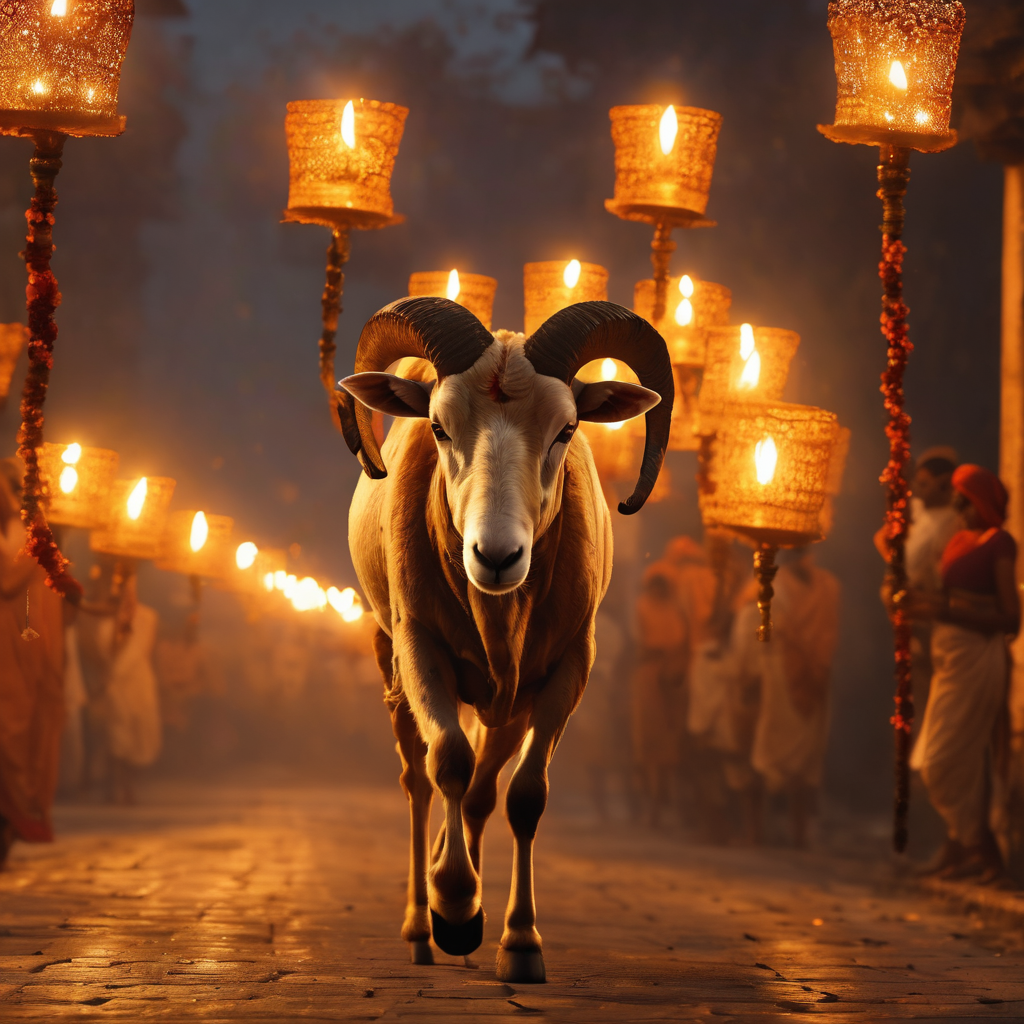A beautiful homage to devotion and appreciation in the middle of India, where custom and religiousness converge, takes place within the heart. Govardhan Puja or Annakut is one of the most important events during the four-day long Diwali celebrations.
The Legend of Govardhan Puja
To start with, Govardhan Puja finds its origin rooted in Hindu mythology and Lord Krishna’s life. This day is known for its most popular story, which narrates how the Govardhan Hill was lifted.
The people of Vrindavan were getting ready for a big sacrificial ceremony to honor Lord Indra.Nevertheless, in his youthful days, young Krishna suggested to them that they should worship at the hill of the Govardhan as it had brought about much fertile dust and fodder for the cattle.
Lord Indra was not happy with the advice by Lord Krishna on this matter. Instead, he showered the inhabitants of Vrindavan with heavy rainstorms and thunder. The pouring rain intensified making matters worse leading towards inundation of the whole village.
Therefore, upon hearing the request of the villagers, Lord Krishna was compelled to do something about it.Bhaumasa managed to lift of the massive Govardhan hill using only one finger and sheltered the villagers and their cattle from being washed away in the floods. It took Lord Krishna one week to hold his finger on the mountain and protect the people from the punishment by Indra.
Finally, realising his pride, Lord Indra stopped the storm. The villagers whose lives were saved by divine intervention of Lord Krishna thanked Him by worshipping Govardhan hill as a sign of protection, food and Divinity.
The festival of Govardhan Puja celebrates a monumental event that underscores the essence of the existence of God’s presence in every element within the world.
Traditions and Celebrations
Annakut, meaning ‘mountain of food,’ is the heart of Govardhan Puja. Devotees prepare a variety of vegetarian dishes, sweets, and savories, artfully arranged to resemble a mountain. They gather to worship Lord Krishna and Govardhan Hill, using incense, lamps, and sacred verses. Prasad, the blessed offerings, is then distributed, symbolizing prosperity. In Vrindavan, a ritual circumambulation of Govardhan Hill, known as ‘Govardhan Parikrama,’ is performed. Cows, revered in Hindu culture, are adorned and honored with treats. Cultural programs often showcase Lord Krishna’s stories and teachings
Govardhan Puja holds cultural and spiritual significance:
- It emphasizes gratitude for nature’s abundance and the divine presence in natural elements.
- Lord Krishna’s story teaches humility and devotion, fostering reverence for divine grace.
- It’s a communal celebration, promoting unity and shared devotion.
- The Annakut feast symbolizes abundance and sharing, encouraging generosity and charity.
- The festival reminds of the importance of safeguarding the environment and believing in miracles, exemplified by Lord Krishna’s extraordinary feat.
How govardhan puja is celebrated in different parts of the country:
In states like UP, Bihar, Jharkhand and Haryana etc, Govardhan Puja is marked with fervor. Devotees prepare elaborate Annakut offerings, visit temples, and participate in cultural events.
In Gujarat, the festival is known as “Goverdhan Puja” or “Annakut Puja.” Devotees create Annakuts consisting of a wide range of vegetarian dishes and sweets.
In Vrindavan, the town closely associated with Lord Krishna, Govardhan Puja is celebrated with great devotion. Devotees flock to the Govardhan Hill and perform the Parikrama (circumambulation).
In Rajasthan, the festival is celebrated with the worship of cows and the preparation of delicious dishes, including traditional sweets like Ghewar and Dal Baati Churma.
Govardhan Puja, or Annakut, radiates gratitude, devotion, and community spirit. It teaches recognizing divine grace in nature’s elements. In the words of Mahatma Gandhi, ‘You must be the change you want to see in the world.’ Annakut encourages sharing and being the change, nourishing the spirit with humility, gratitude, and unity. May it remind us to honor and preserve the divine grace sustaining life on Earth.

